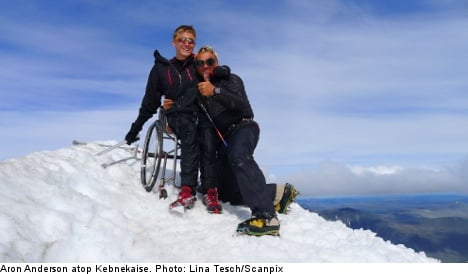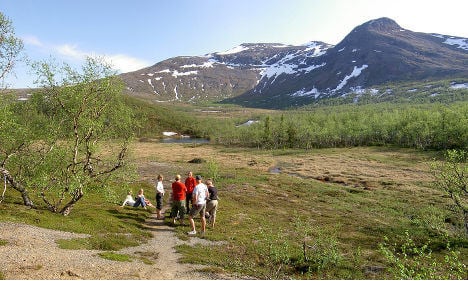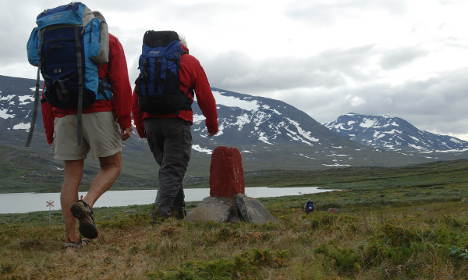Aron Anderson is not your typical 25-year-old. After losing the use of his legs as a child when surgeons removed a tumour from his lower back, the Swede turned to exploration and tales of inspiration.
When writing a book on that exact topic, he met a like-minded adventurer and explorer in Johan Ernst Nilson and the pair decided to team up and climb the 2,106-metre high Kebnekaise. What followed was a three-day trek of endurance, impressive arm strength, and inspiration.
“Reaching the top was awesome. I was lost for words, just sitting up there,” Anderson tells The Local.
IN PICTURES: Follow Aron on his climb to the top
But climbing the mountain in far northern Sweden wasn’t as important to Anderson as being the first, he explains.
“It’s always special to be the first to do something. If something hasn’t been done, you don’t know if it’s possible. It’s like the four-minute mile – no one believed it could be done until Roger Bannister did it, now people break the four-minute mark all the time.”
But the climb was no easy task, and despite the climb itself being “not dangerous but just really tough”, Anderson had to train hard in preparation.
“I did a lot of work on my fitness beforehand,” he explains, adding that he wasn’t sitting in his wheelchair during the entire climb.
“I can kind of stand on my legs, but they’re very weak – so during the climb I was using crutches, my arms, I was even crawling a bit, anything really to get me to the top.”
“There are so many rocks up there, from loose little rocks to much larger ones. These were a big challenge for me, I had to be really careful where I put down my crutches so the stones wouldn’t dislodge.”
But the rocks weren’t the only challenge. Bad weather meant the trip, which usually takes people 12 to 14 hours, was delayed halfway through by 24 hours. Altogether, the climbers spent three days on the mountain, with 28 walking hours.
So, with the Kebnekaise trek done and dusted, what’s next for the motivational mountaineer?
“My next goal is probably to win a medal at the Paralympics in Rio – my events are the marathon and the 1500 metre run,” he told The Local.
SEE ALSO: A list of The Local’s past Swedes of the Week
And what about the next mountain? Everest perhaps?
“That’s crazy,” he responds with a laugh. “But it would be really cool to get to base camp. We’ll see. Someone’s got to be the first, I guess.”
Editor’s Note: The Local’s Swede of the Week is someone in the news who – for good or ill – has revealed something interesting about the country. Being selected as Swede of the Week is not necessarily an endorsement.
Oliver Gee




 Please whitelist us to continue reading.
Please whitelist us to continue reading.
Member comments